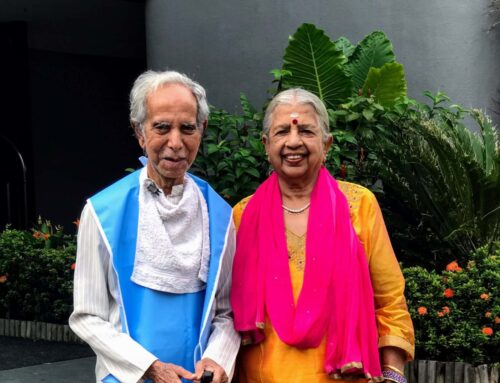In this week’s column, I interviewed labour reform expert, Manish Sabharwal about the future of employment in India. You can see the piece by clicking here
India must remove shackles to achieve true labour reform
Shoba Narayan
Last Updated: Feb 27, 2011
A few months ago Manish Sabharwal, the chairman of TeamLease Services, India’s leading staffing company, was in Rajasthan for a job fair.
As always, long lines of young men and women stood, resume in hand, wanting to be hired for a job – any job. One of the young men pleaded that he needed to work to support a large family. After looking through his resume, Mr Sabharwal’s team placed him in a job a couple of towns away from his own.
Twenty minutes later the shamefaced young man returned with his father and refused the job. Could TeamLease, the younger man asked, place him in a job closer to home instead of a town that was two hours’ drive away? That was when Mr Sabharwal got involved. Why, he asked, was the man refusing to spend a few hundred rupees for a bus ride to take a job that offered him 6,000 rupees (Dh486) a month?
The turbaned father standing next to the clearly uncomfortable young man, answered in a sonorous voice: “Sir, we don’t give up our votes, women or jobs to any other caste except our own.” Turns out that the town a mere two hours away was dominated by a caste that was different from the one where the young man lived. The father wanted his son’s job for his own town; his own caste.
The father and son left, but the incident rankled Mr Sabharwal. A couple of hours later, after the job fair ended, he sent word through one of his associates, who knocked on the door of the young man’s home, and said there had been a mistake. The job that had been offered was indeed, a couple of towns away, but the salary was not 6,000 rupees, but 12,000. The father permitted his son to accept.
“That was his switching threshold, you see,” says Mr Sabharwal, “It was about caste, jobs, votes and all that, but it was also about money.”
As the finance minister Pranab Mukherjee prepares to present his 2011 budget to parliament tomorrow, he is not short of advice. His compatriots have numerous suggestions for him. Curb inflation is a common plea. Improve infrastructure. Open up foreign direct investment into India. Make the government more transparent and regulations for foreign firms less onerous.
Mr Sabharwal has also taken on one of the most contentious issues in modern-day India: labour reform.
“If you taken any economic or social variable like child mortality, foreign-exchange reserves, school enrolment, or GDP growth, India has moved in the right direction since 1991,” he says. “However, in 2011, the only variable which is exactly where it was in 1991 is the percentage of our labour force employed in the informal sector [part of the economy that is not taxed], which is a whopping 93 per cent.” This shameful statistic means that companies have only been able to maintain their share of the labour force at a dismal 8 per cent. Most Indians in the workforce are self-employed, often self-under-employed. Nearly 8 million to 10 million join the workforce each year.
The journey of reform has to do with creating the “infrastructure of opportunity”, as experts call it. But opportunities are not touching vast swathes of India for a variety of reasons including – as was demonstrated in the case of the young man – caste and regional politics.
Policymakers and bureaucrats need to think creatively and implement a radical revamp of what Mr Sabharwal calls the ” three Es” – education, employability and employment. “We need to change the fact that the most important decision a child makes is to choose your parents wisely,” he says drily.
After the reforms of 1991, the Indian government embarked on massive spending in programmes that guaranteed basic benefits to its poor citizens. Programmes such as the Mahatma Gandhi National Rural Employment Guarantee Actguarantees 100 days of employment each year to a rural household whose adult members volunteer to do unskilled manual work such as building roads or bridges.
Sarva Shiksha Abhiyan is a government programme that guarantees elementary education for all children. The success of both these programmes is middling at best.
India is still under-utilising its skilled manpower and Mr Sabharwal routinely meets young men who have a bachelor’s degree in English but can speak only a few words of the language. His solution is to introduce reforms in the employment, skills and labour area and to regulate education across India. “The next wave of public policy impact does not lie in poetry but in plumbing,” he says.
India’s labour ministry has targeted employment growth of “at least at 2.5 per cent a year compatible with the 9 per cent growth in the economy”.
The census projection report shows that the proportion of population in the working age group (15-59 years) is likely to increase from about 58 per cent in 2001 to more than 64 per cent by 2021. Putting these people to work does not mean simply doling out jobs.
It can be done only if the government liberalises labour and unshackles it from the complex set of rules that keeps employees contractual rather than fully employed — with all the protections, such as benefits and pension, entitled to employees in the developed world.
Shoba Narayan is a journalist based in Bangalore and the author of Monsoon Diary: a memoir with recipes




Leave A Comment